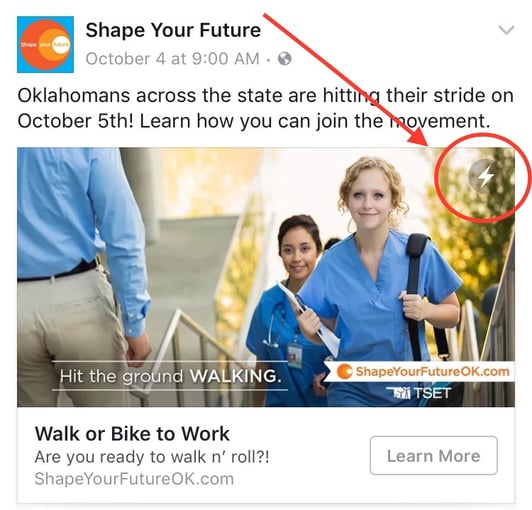
3 Things You Need to Know About Facebook Instant Articles
When people ask me what I do for a living, I tell them I build websites. I’ve done it my whole career, and — heck — I’ve been building websites for fun since high school.
Part of building websites is driving traffic to them. At VI, we build entire campaigns around driving users to websites so that we can educate, inform and convert strangers into customers.
Seven years ago, I set up my first Facebook Brand Page for a client. I wanted the Facebook page to drive more visitors to our website. And once the profile was established, we wrote our very first post promoting a product page on our website. Why? Again, I wanted the Facebook page drive more visitors to our website.
You see, at the time, we saw Facebook as a tool to — as you probably can guess — drive more visitors to the website. Since then, our social media strategy has fundamentally shifted. Rather than focus solely on website links, we aim to foster conversation and connect with our audiences. In the end, however, we still want those conversations to lead users back to our website.
Fast forward to today, and Facebook has rolled out something they call Instant Articles. Instant Articles are essentially your blog posts or pages hosted directly on Facebook — not your website. Facebook mobile app users see your Instant Articles posts within their own News Feed along with a small little lightning bolt icon on the post to indicate the post is an Instant Article.
 Facebook Instant Articles create a great user experience because they load almost instantaneously — not in a few seconds like most websites. This is because Facebook requires you to feed your content into a set schema that strips out a lot of the coding found on most websites. It creates a standard for how all Instant Articles are going to load and look to the user with some minor styling options.
Facebook Instant Articles create a great user experience because they load almost instantaneously — not in a few seconds like most websites. This is because Facebook requires you to feed your content into a set schema that strips out a lot of the coding found on most websites. It creates a standard for how all Instant Articles are going to load and look to the user with some minor styling options.
Sounds great, right? Maybe, but I’m a bit skeptical and more than a little conflicted. I’ve spent my entire career building websites and trying to drive visitors there. And now Facebook comes along and is telling me, “you know that blog you just developed for your client? Well, we want all of that content within Instant Articles, not your website.”
But it’s not as if brands can simply choose to opt out of the new feature. Because Facebook controls which posts are displayed in users’ News Feeds, it’s likely the platform will favor Instant Articles over the Facebook posts linking back to our websites.
So what’s at stake when placing our content into Instant Articles?
- Brand identity is lost in uniform style standards.
Instant Articles allow for only minor style updates, meaning marketers surrender the ability to customize the font, as well placement and size of certain elements. Consider Disney or even Nike. I’m willing to bet you could identify those brands based on their signature fonts alone. Elements like these are part of a brand’s fabric, and standardizing them distances content from the brand and minimizes the user’s ability to associate the brand with the content. And after all, that’s part of the point of content creation in the first place. - Tracking is influenced.
Instant Articles allow for the implementation of Google Analytics codes, but neglect to accommodate codes from Google Tag Manager. This means we lose out on advanced tracking capabilities those additional codes offer. - Retargeting is compromised.
With Instant Articles, marketers lose the ability to load in third-party advertising pixels which can allow for remarketing to users who have already engaged in your content.
But despite these pitfalls, Instant Articles can provide value we may lack by simply linking back to our own websites time and time again. After all, Facebook is one of the 800-pound gorillas controlling the Internet today, so using Instant Articles to play into their algorithm and reach their massive audience can be hugely beneficial in getting more eyes on our content, regardless of where it’s located.
So at the end of the day, we need to leverage Instant Articles strategically and when it makes sense. With each piece of content, be sure to consider the purpose and whether that purpose is better served through links to your website or with Instant Articles.
(For more information about VI's services, click here)








